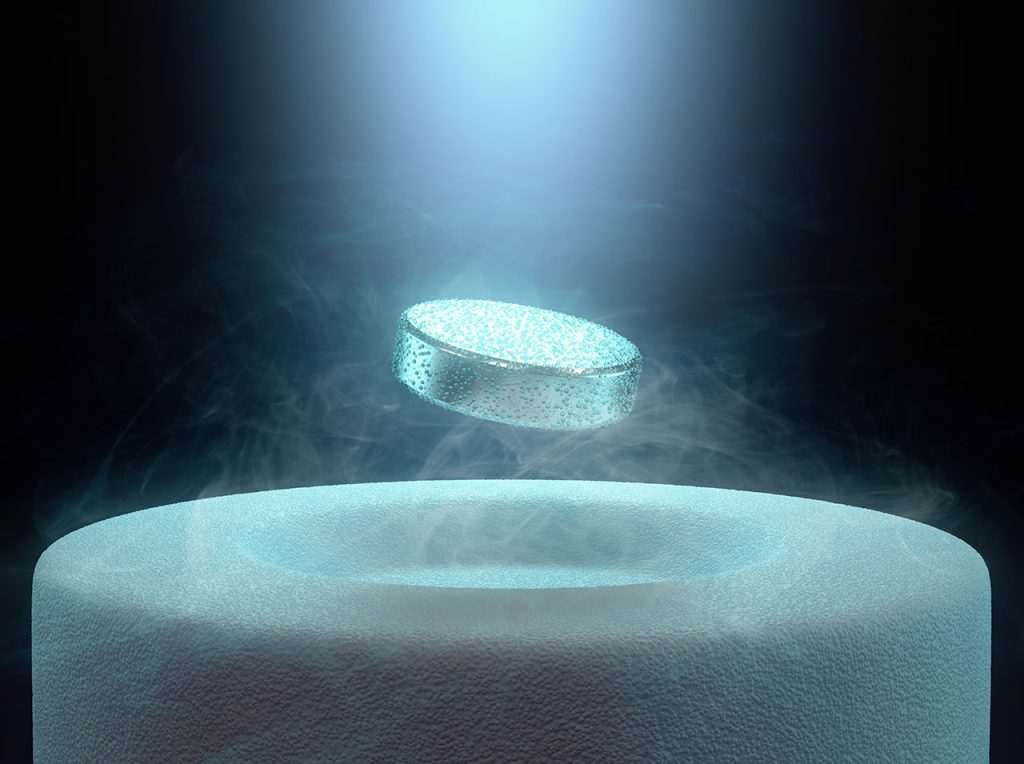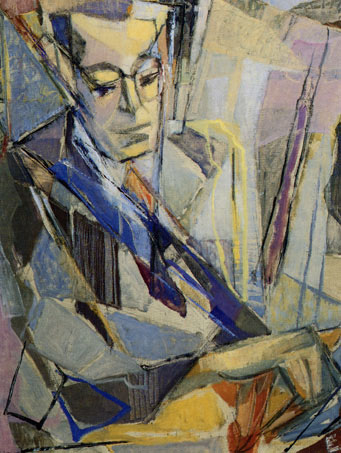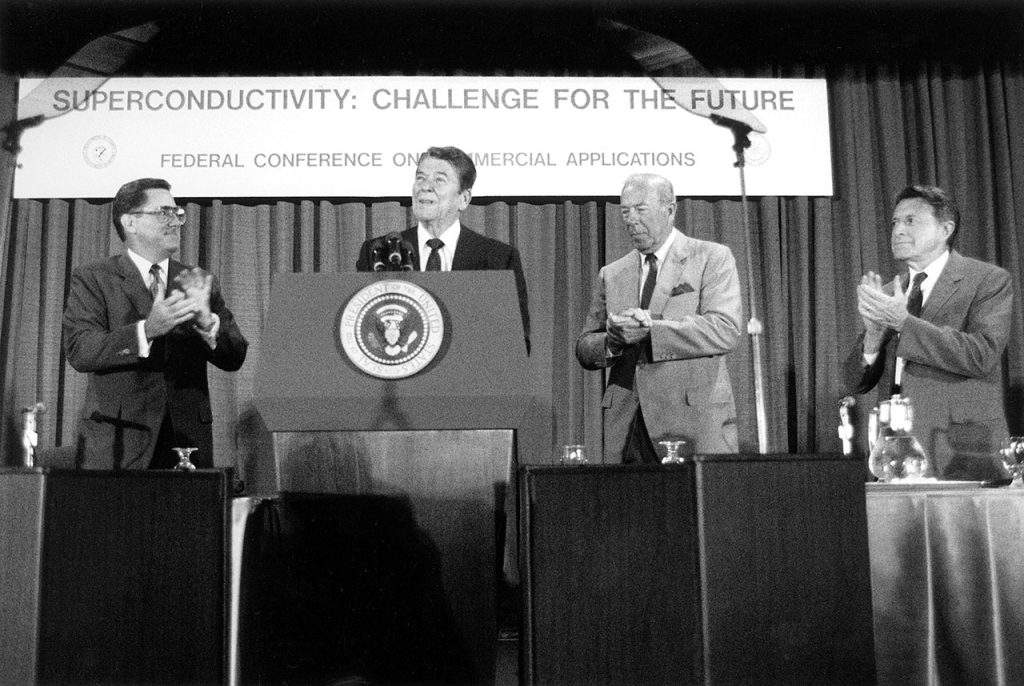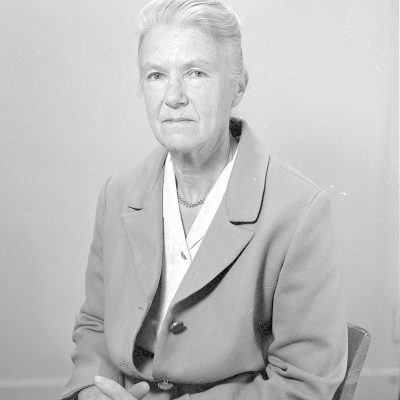When German-Jewish chemist Fritz London moved his family to Duke University in 1939 for a new faculty job, his wife and young son escaped imprisonment in Nazi concentration camps by mere hours.
Banished from Germany for being Jewish and having struggled to find meaningful work in a world of turmoil, London came to Duke and went on to do work that earned him four Nobel Prize nominations. (He had five altogether, but never won.)

London’s insights on the motion of super-chilled atoms and superconductivity are now considered foundational to enabling supercomputers and MRI imaging.
Like many other Jews of the time, young physicist and chemist London lost his academic job in Berlin in 1933. Hitler’s eviction of all Jewish government employees in the spring of that year disrupted London’s ongoing research into the behavior of electrons and their atoms. He and his wife Edith headed to Oxford, England where a chemical manufacturing company had offered the space and salary to continue his work. However, even that stay was temporary. Amidst the deluge of refugees attempting to flee Germany and the ongoing global economic depression, resources were limited.
“I do not see any concrete hope for the future,” London wrote to a friend by 1935. Having pursued leads in Edinburgh, Russia, and Peking and failing to find another job that would prevent his and Edith’s deportation back to Germany, London was offered a position in the politically simmering Paris of 1937, and felt he had to take it.
In Paris, the Londons found a warm social reception as well as Fritz’s first Nobel nomination, but the lack of French governmental resistance before WWII and the impending threats of Nazi troops meant that his new job at Institut Henri Poincaré was limited and dangerous.
Some of the friends that welcomed the Londons to Paris were involved with the French resistance, for which they would later be murdered. A Jewish friend of Edith London and her husband decided to abort a much-wanted child because the couple agreed “they did not need to have children for the concentration camps.” And then, in a stroke of luck, Paul Gross of Duke’s budding Department of Chemistry came to visit and started conversations that eventually led the Londons to safety at Duke.
Born in 1900, London had become internationally renowned in chemistry at a young age because he and his brother Heinz experimented with the then-groundbreaking notion of applying math and physics to study the chemical interactions of atoms and molecules. Specifically, Fritz and Heinz London applied their deep knowledge of math, acquired in part by being the sons of a math professor, to assess how and why molecules bind together at extreme low temperatures. In that area, London made his first but by no means last major mark upon science.
Heat is the energy of molecules bouncing around each other. The theory was that as molecules lose their heat and therefore stop bouncing around, their outer shells of negatively charged electrons should still repel other molecules, because negative repels negative. But chemistry experiments were not matching that expectation. At extreme low temperatures — single digits Kelvin above absolute zero — molecules were found to be huddling closer together than their electron charges should allow.
London was able to calculate the movements of not only the molecules but their electrons at these frigid temperatures, and he showed that the electrons too should be expected to slow down their movements. That in turn meant that some atoms might have their electrons (metaphorically) shifted more to one side, creating neat little asymmetries that would allow each atom to match its positively charged side with other atoms’ negative side and thus squeeze closer together.
London’s discovery was considered an immediate revelation because it explained the experimental observations and is now recognized as a key facet of Van der Waals binding forces. Nobel Prize-winning physicist Max Planck wrote in a recommendation letter that London had “brought the sciences of chemistry and physics working on different lines of thought into a close logical connection. His work has become fundamental for an entire field of research.” At the time of that letter, London was only 33 years old.
But London’s expertise mattered not one bit to Germany at the dawn of World War II.
Paul Gross wanted to apply London’s theory of solubility to some problems being researched at Duke Chemistry. During Gross’s trip to Paris in the fall of 1937, he saw London’s genius first-hand. After his visit, Gross began sending a barrage of letters to recruit the mathematical scholar.
Duke’s faculty roster already included chemistry experimentalists, but nobody yet who could unite chemistry with physics like London could. Gross wanted someone who could mathematically peer into atoms on their tiny scale and understand how and where the electrons were whizzing about, then use that insight to explain the odd effects sometimes produced in the labs. London had such confidence in his ability to do exactly that, he would often perform these calculations in pen his lab notebooks.

London made his way to Duke alone, while Edith stayed behind in increasingly hostile Paris, possibly because she was pregnant with their first child, Francis. The child was born in April 1939. Despite increasingly complex visa issues, likely caused by the expanding restrictions on travel before the outbreak of war, Edith London arranged their travel to Durham as best she could. She did not leave behind a record of the exact obstacles she faced, instead only summarizing them in a letter addressed to “My dearest people” by stating that, “I need not telling you all the experiences of the last weeks – you had the same like all the other people in Europe.”
Edith London walked with baby Francis onto a passenger steamer on Sept. 1, 1939. Half an hour after they boarded, the General Mobilization order was announced. Five hours after they boarded, World War II was declared in Europe.
Adapting her travel plans as she went because the visa requirements morphed further still while they were at sea, the mother and child eventually made it to Durham, in part because of Paul Gross’s advocacy for the immigration status of the entire family. The Londons’ property, left behind in Europe, was seized.
Fritz London settled peacefully into the Department of Chemistry at Duke, and he brought with him the physics and math that the department needed. He began applying his theories to specific types of materials at extreme low temperatures, such as helium.
London was one of a handful of researchers studying the new field of superfluids, the name for the strange observation that sufficiently chilled fluids begin conducting electrons, and therefore electric current, without any losses. From superfluids, London jumped to superconductivity in general, becoming part of the early wave of researchers who applied the same math of atoms and electrons at low temperature to assess how and why the electrons could whiz along more readily when those materials were extremely cold.
An image from a 1963 film by physicist Alfred Leitner showing one of the odd properties of superfluids. Liquid helium is suspended in a clear, rounded cup. The helium inside the cup creeps up the inside walls to ooze out over the top, then forms drops that shed from the outside. Provided the helium stays sufficiently cooled, it will continue to do so until the cup is empty.
On May 28, 1942, in Durham, London scribbled in his crooked handwriting the equations used to calculate how individual molecules within a volume of gas would behave. He used Boltzmann’s equation, starting out first using k as a subscript then later scribbling it out with red pencil and changing it to the letter v. He drew in a graph how many molecules within the group would be at each possible energy state, representing them as sharp lines jabbing vertically upward from the horizontal.
The next day, the Nazi regime ordered Jewish people in his former neighborhood in Paris to begin wearing the yellow badge of the Star of David. Two days later, the first reports trickled out that Jewish people who had been transported vaguely “East” were being murdered using poisonous gas.

London’s calculations into superconductivity enabled the invention of advanced computers. Supercomputers use the principles he decoded to take advantage of superconductive materials to perform their calculations faster, with less heat generated and with less loss as the electrons whiz from one portion of the circuit to another. London’s theories and conclusions have also been used to build MRIs, which utilize the magnetic-cancelling properties of superconductors as part of their design to manipulate the magnetic fields around the body to allow imaging of our tissues.
London successfully petitioned the United States for naturalization on Dec, 7, 1939. His papers on superconductivity and superfluidity have received thousands of citations.
London died of a heart attack on the otherwise uneventful, unseasonably warm Tuesday on March 30, 1954, as his fifth Nobel nomination was pending. But only living scientists can receive the award. London’s Russian research collaborator and co-nominee, Lev Landau of Russia, was awarded the Nobel singly for this work in 1962.
Years later, Francis London wrote a letter describing one of his strongest memories of his father. They were on a walk together and his father was suffering from a runny nose. Fritz London stopped, pointed to his own face, and announced a dad joke of just one word: “SUPERFLUIDS!”



